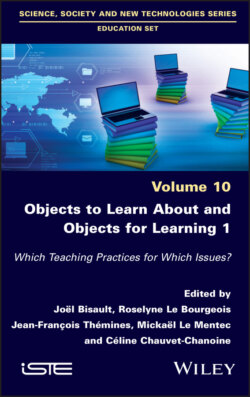Читать книгу Objects to Learn about and Objects for Learning 1 - Группа авторов - Страница 26
I.2.3. Artifacts, content and modalities
ОглавлениеThe challenge here is to put forward and suggest questions. The central questions are concerned with the function of these artifacts: what are the relationships between the artifacts and the taught content or teaching processes? What too are the relationships between artifacts and school subjects or disciplines? Develay (1992) indicates that a school discipline is characterized by its attributes, which are composed of knowledge (declarative and procedural), tasks and objects, and whose overall coherence is fixed by the “disciplinary matrix”, which is the principle of intelligibility of the discipline and can evolve in line with teaching progressivity. Thus, life sciences based on natural history are taught through observation, flowers, rocks or animals, and knowledge of functions, but this is not the case in molecular biology.
For the pupils, tasks, knowledge and more particularly objects are then criteria for indexing school moments, which is indicated by research focused on disciplinary awareness (Reuter 2007) or curricular consciousness (Lebeaume 2000, 2017). As has been emphasized above, misunderstandings (Bautier and Rayou 2013) are sources of construction of inequalities because some pupils, for example, confuse the task of coloring in different teeth with the objective of making the distinction between incisors that cut, canines that tear and molars that grind with the task of coloring in drawings and keeping within the outlines of the shapes drawn.
